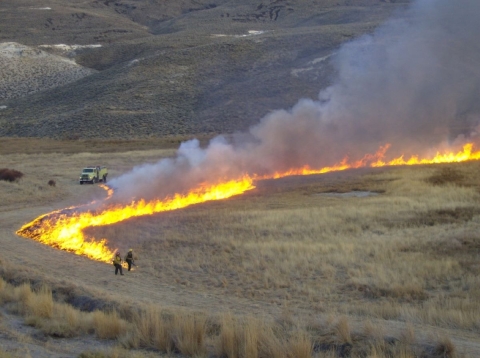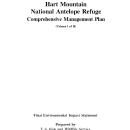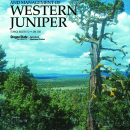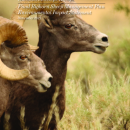What We Do
The National Wildlife Refuge System is a series of lands and waters owned and managed by the U.S. Fish and Wildlife Service. Wildlife conservation is at the heart of the refuge system. It drives everything we do from the purpose a refuge is established, to the recreational activities offered there, to the resource management tools we use. Selecting the right tools helps us ensure the survival of local plants and animals and helps fulfill the purpose of the refuge.
At this Refuge, some of the conservation tools we use include:
- National Wildlife Refuge System Improvement Act
National Wildlife Refuge System Improvement Act of 1997: The NWRS Improvement Act defines a unifying mission for all refuges, including a process for determining compatible uses on refuges, and requiring that each refuge be managed according to a CCP. The NWRS Improvement Act expressly states that wildlife conservation is the priority of System lands and that the Secretary shall ensure that the biological integrity, diversity, and environmental health of refuge lands are maintained. Each refuge must be managed to fulfill the specific purposes for which the refuge was established and the System mission. The first priority of each refuge is to conserve, manage, and if needed, restore fish and wildlife populations and habitats according to its purpose.
- Comprehensive Conservation Plan
Refuge conservation plans are called “comprehensive conservation plans” (CCPs). The purpose of a CCP is to specify a management direction for the Refuge for the next 15 years. The goals, objectives, and strategies for improving Refuge conditions—including the types of habitat we will provide, partnership opportunities, and management actions needed to achieve desired conditions – are described in the CCP. The Service’s preferred alternative for managing the Refuge and its effects on the human environment, are described in the CCP as well.
- Oregon Conservation Strategy
The Oregon Conservation Strategy details the state of Oregon's priorities for addressing the state's conservation needs with respect to fish and wildlife. The statewide strategy is developed as part of the State Wildlife Grants Program and is approved by the U.S. Fish and Wildlife Service and therefore is carefully considered when developing and revising Refuge Comprehensive Conservation Plans.
- Strategic Habitat Conservation
Strategic Habitat Conservation is an initiative by the U.S. Fish and Wildlife Service to consider and plan for resource conservation on an ecological basis at a large-landscape scale. This approach to conservation recognizes that in order to help wildlife and natural systems cope with complex and far-ranging threats such as drought, climate change climate change
Climate change includes both global warming driven by human-induced emissions of greenhouse gases and the resulting large-scale shifts in weather patterns. Though there have been previous periods of climatic change, since the mid-20th century humans have had an unprecedented impact on Earth's climate system and caused change on a global scale.
Learn more about climate change and large-scale habitat fragmentation, we must work strategically with partners to conserve landscapes capable of supporting self-sustaining populations of fish and wildlife, while also providing for the needs of people.
Management and Conservation
Through planning, partnerships, and management Hart Mountain National Antelope Refuge conserves a variety of resources beyond fish, wildlife, plants and their habitats. Water, air, soil, cultural and historic, recreation, and wilderness resources are all conserved for the benefit of the American people.
Within the Refuge, the natural ecology maintains healthy populations of fish, wildlife, and plants and little direct manipulation or management is needed on a regular basis.
The primary way in which habitats are currently managed to restore and maintain wildlife populations is through the manipulation and management of western juniper and fire and the control of invasive species invasive species
An invasive species is any plant or animal that has spread or been introduced into a new area where they are, or could, cause harm to the environment, economy, or human, animal, or plant health. Their unwelcome presence can destroy ecosystems and cost millions of dollars.
Learn more about invasive species . The suppression of natural fires, the ignition of prescribed fires, cutting and removal of native juniper, seeding of native plants following fire, and the use of herbicides to control invasive weeds are all conducted within the context of land uses and changes across the larger supporting landscape.
The basis for resource management within the Refuge is the Refuge Improvement Act, but many other laws and numerous policies provide further basis and direction for management. How these policies are implemented for management of the Refuge is detailed in the Refuge Comprehensive Conservation Plan.
- The U.S. Fish and Wildlife Service (Service) completed the Comprehensive Conservation Plan for Hart Mountain National Antelope Refuge in 1994
- Draft Bighorn Sheep Management Plan and Environmental Impact Statement:
Since 2017, the California bighorn sheep on Hart Mountain National Antelope Refuge have declined by almost 70%. Refuge biologists counted just 48 sheep during aerial surveys conducted in 2020, a trend that puts the population at risk of extirpation.
To address the decline, Refuge staff, in coordination with Oregon Department of Fish and Wildlife and USDA-Wildlife Services, developed a Bighorn Sheep Management Plan and Environmental Impact Statement (EIS). The EIS is focused on evaluating and managing factors influencing the bighorn sheep population including habitat and causes of mortality. In the EIS, we analyzed existing data and identified alternatives that represent a range of reasonable management approaches that reflect the urgency to implement short-term management actions in combination with mid- to long-term management and monitoring. The goal is to restore the herd to a healthy, sustainable population that is resilient to the dynamic conditions on the Refuge such as predation, drought, and changing habitat conditions.
In May 2020, we published the Notice of Intent to develop the EIS in the Federal Register and opened the initial 30-day public scoping period. A Scoping Report that summarized comments and major issues was completed.
Law Enforcement
U.S. Fish and Wildlife Service law enforcement officers have a wide variety of duties and responsibilities. Officers help visitors understand and obey wildlife protection laws. They work closely with state and local government offices to enforce federal, state and refuge hunting regulations that protect migratory birds and other game species from illegal take and preserve legitimate hunting opportunities.
Laws and Regulations
On National Wildlife Refuges wildlife comes first. Refuges are not managed for multiple uses like other public lands managed by the U.S. Forest Service and Bureau of Land Management. A variety of activities such as overnight camping, motorized travel, and horseback riding are allowed, but all recreation activities here are regulated to ensure wildlife is protected. Allowing recreation within the refuge depends upon your ability to know and follow refuge rules and regulations
A Special Use Permit is required for any commercial use and for any use or activity other than public hunting, fishing, wildlife observation, wildlife photography (except from March 1- June 1), environmental education, and interpretation which are the priority wildlife dependent uses compatible with the purposes for hart Mountain National Antelope Refuge.







